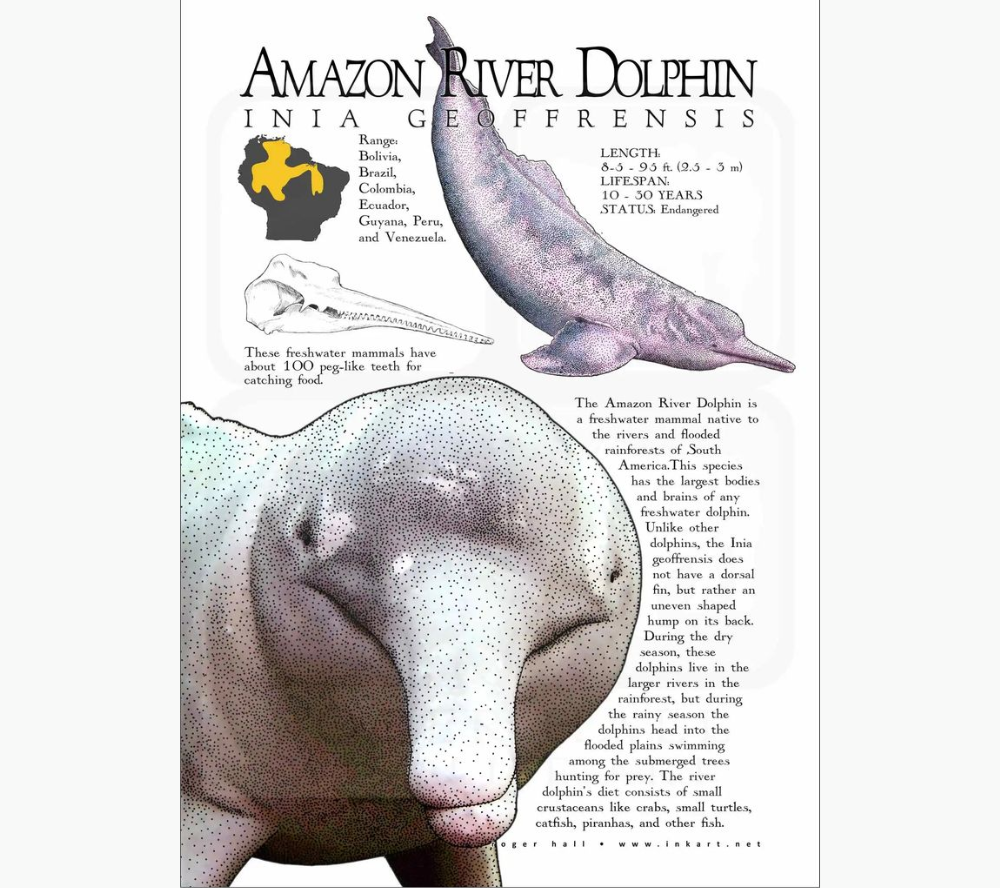Amazon River Dolphin: The Pink Guardian of the Rainforest

Scientific Profile
🐬 Species: Inia geoffrensis
🌿 Local Names: Boto (Brazil), Bufeo (Spanish)
📏 Size: 1.8-2.5m (6-8.2 ft) / 85-185 kg (187-408 lbs)
🎨 Color: Pale gray to vivid pink (adult males)
Unique Adaptations
1. Unusual Anatomy
-
No dorsal fin: Replaced by a ridged hump
-
Flexible neck: Can turn head 90° (unlike oceanic dolphins)
-
Peg-like teeth: 100+ teeth for crushing crustaceans
2. Cognitive Marvels
🧠 Brain Capacity:
-
40% larger than human brains (relative to body size)
-
Exceptional echolocation to navigate murky waters
3. Seasonal Nomads
🌧️ Rainy Season:
-
Swims through submerged forests
-
Hunts among tree roots
☀️ Dry Season: -
Returns to main river channels
Conservation Status
📉 Threats:
-
Mercury pollution (gold mining)
-
Bycatch in fishing nets
-
Habitat loss (dams & deforestation)
🛡️ Protection Efforts: -
Brazil’s National Boto Action Plan
-
CITES Appendix II listed
Cultural Significance
📜 Folklore:
-
Amazonian legends say botos transform into handsome men at night
-
Considered sacred by some indigenous groups
Comparison: Freshwater Dolphins
| Species | Location | Key Trait | Status |
|---|---|---|---|
| Amazon River Dolphin | South America | Pink coloration | Endangered |
| Ganges River Dolphin | India/Bangladesh | Nearly blind | Critically Endangered |
| Yangtze River Dolphin | China | Possibly extinct | Critically Endangered (likely extinct) |
How to Help
-
Support mercury-free gold mining initiatives
-
Choose sustainable rainforest products
-
Donate to Amazon River Dolphin Conservation Foundation
Did You Know?
Their pink color comes from scar tissue from fights and capillary networks near the skin!
